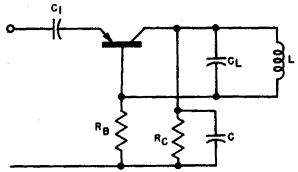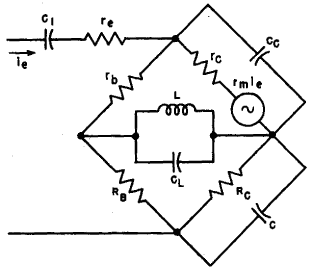| Transistor Basics is a free introductory textbook on transistors and their basic applications. See the editorial for more information.... |

|

Home  Transistor High Frequency Applications Transistor High Frequency Applications  High Frequencies Circuits High Frequencies Circuits  Neutralization Neutralization |
||






|
||
|
NeutralizationAuthor: Leonard Krugman The close coupling between the input and the output circuits of the transistor causes the resonant frequency of the coupling circuit to be particularly sensitive to variations in the input and output impedances. In general, the load impedance has a greater effect on the input impedance than the generator impedance has on the output impedance. For this reason, the best procedure to follow in aligning an i-f strip is to start with the last stage and work toward the first.
Fig. 7-6. (A) Neutralized i-f amplifier. (B) Equivalent circuit of neutralized i-f amplifier. In practical circuits the neutralization network design can be simplified by omitting the capacitor C if a point-contact transistor is used, or by eliminating Rc if a junction transistor is used. This changes the balance equations to rb/RB = rc/Rc for the point-contact types, and rb/RB = C/Cc for the junction types. These simplifications are possible at the intermediate frequencies because feedback is governed primarily by rc in the point-contact transistor, and by Cc in the junction transistor. The network components are not very critical. Values within a 5% tolerance range are generally satisfactory. Notice that the lower output terminal is connected to ground through RB. This makes it important for the value of RB to be small in order to avoid introducing too much noise through RB into the output circuit. For satisfactory operation, the value of RB should not be larger than the base resistance. This fixes the value of C in the range of Cc, and Rc in the range of rc. The loss in gain due to the neutralizing network will be less than 10% of the total gain in a properly designed circuit.
|
||
Home  Transistor High Frequency Applications Transistor High Frequency Applications  High Frequencies Circuits High Frequencies Circuits  Neutralization Neutralization |
||
Last Update: 2010-11-17



